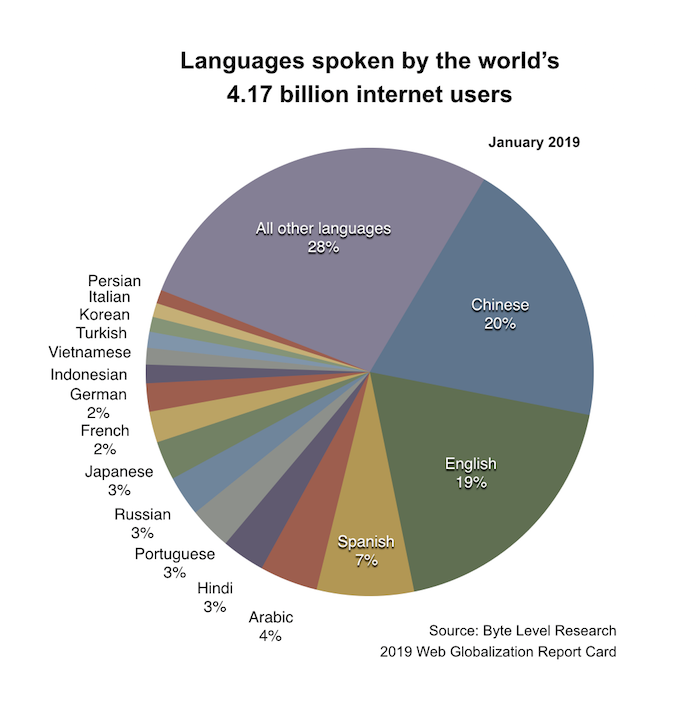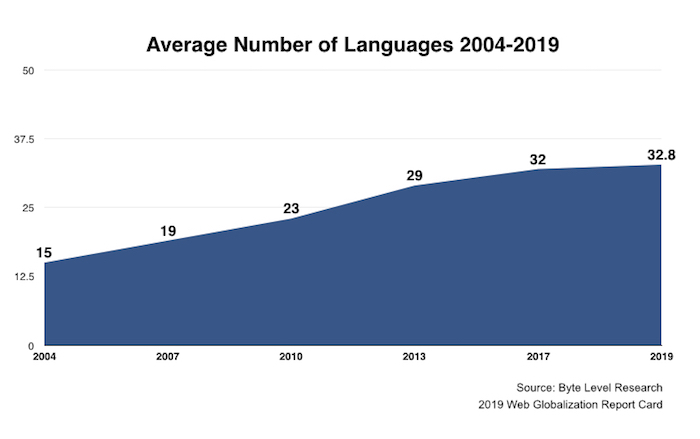Leading with languages: Why 30 languages is below average
As I’ve said for some time, the Internet connects devices, but language connects people.
And when you examine the native languages spoken by the world’s 4+ billion Internet users, it becomes evident that you must support many languages in order to reach many people.

In fact, if you want to reach more than 90% of the world’s Internet users, prepare to support more than 40 languages. Which is why it is no surprise that the organizations and companies that support a significant number of languages also tend to boast a significant number of customers, members and visitors.
Facebook supports more than a hundred languages and boasts nearly two billion users. Google supports more than a hundred languages via its search engine which continues to be the dominant search engine around the world (Russia and China excepted). And Wikipedia (which emerged number one in the 2019 Report Card) supports more than 280 languages and averages more than 17 billion page views per month.
But, for the rest of us, adding languages isn’t all that easy — as it can be quite expensive. While I would argue that the investment (for most organizations) pays off over the long run, a common question I get asked is how many languages should we support?
This is a difficult question to answer without first understanding your business, budget, customers and goals.
But I can first point to the latest data from the 2019 Web Globalization Report Card and say that, for the world’s leading brands, 32 language is the “average” number of languages they support.

The nice thing about studying the same websites for so many years is that I can tell not only how many languages companies such as Apple, Microsoft, BMW and Philips have supported since 2002, but exactly which languages they have supported. And though the pace of language growth may have slowed over the past two years, the overall trend is clear — companies continue to add languages as they seek to expand their global reach. Starbucks, for example, supported just three languages in 2003; today it supports 27 languages (and added a new localized website just last year).
Looking ahead, I fully expect this average to double yet again. Only a handful of companies have localized for India and this country alone has more than 20 official languages. Hindi, for example, is supported by just 7% of the websites in the Report Card.
As I noted in my introduction to the Report Card this year, with all the talk of trade wars and tariffs and walls, one might think that companies have been pulling back globally. But this is simply not the case.
More to come…stay tuned!
This post originally appeared on Globalbydesign.com









